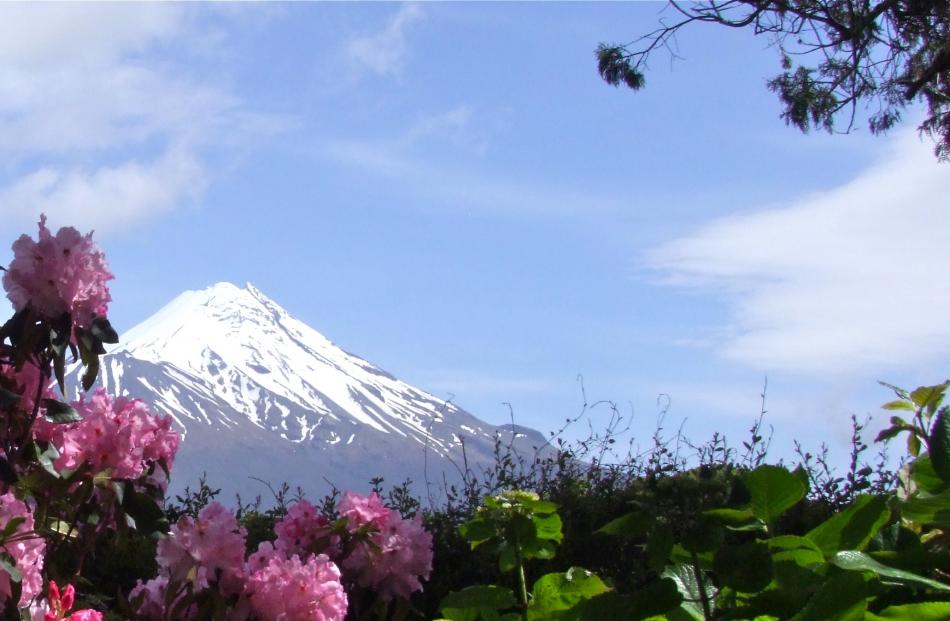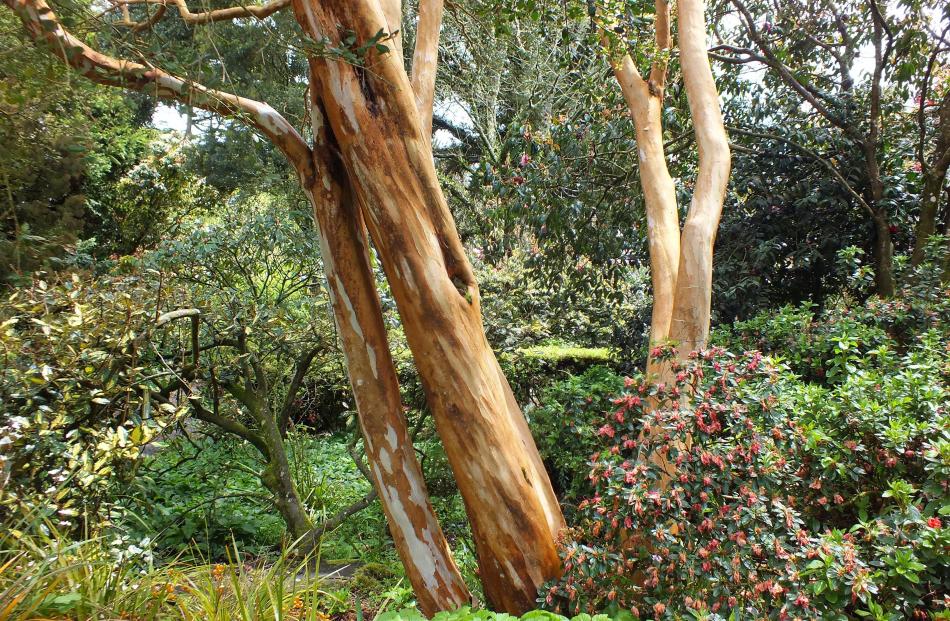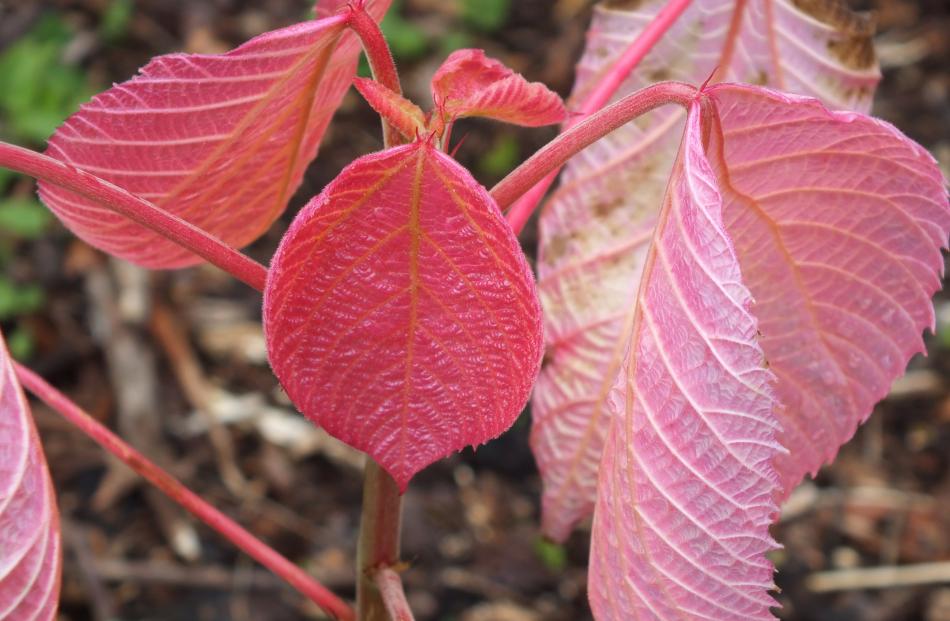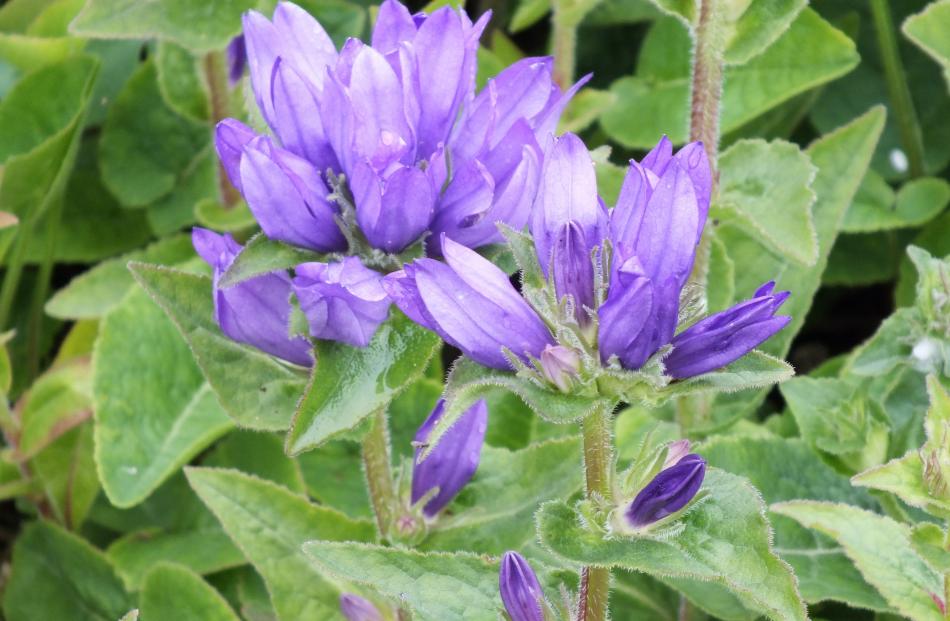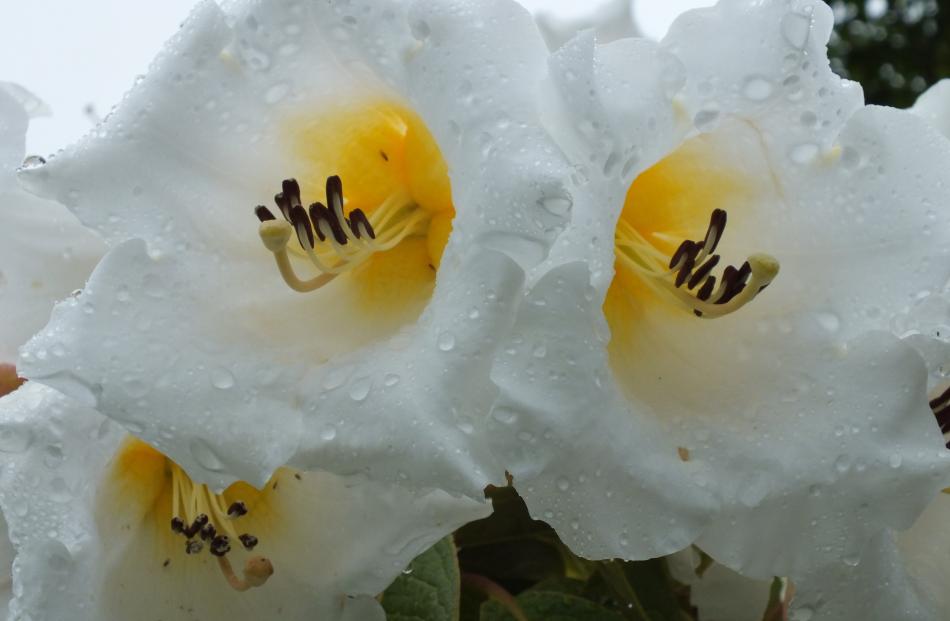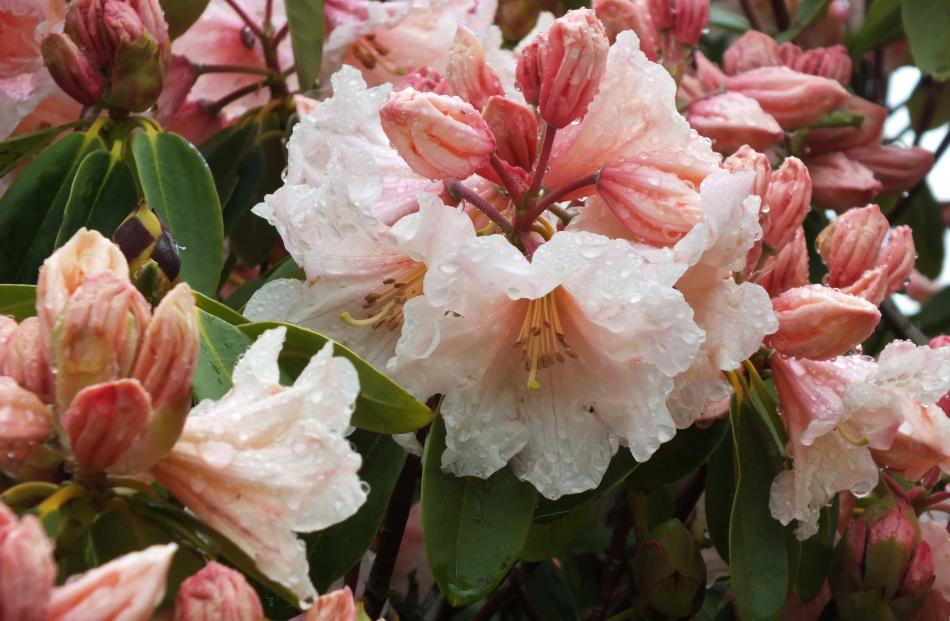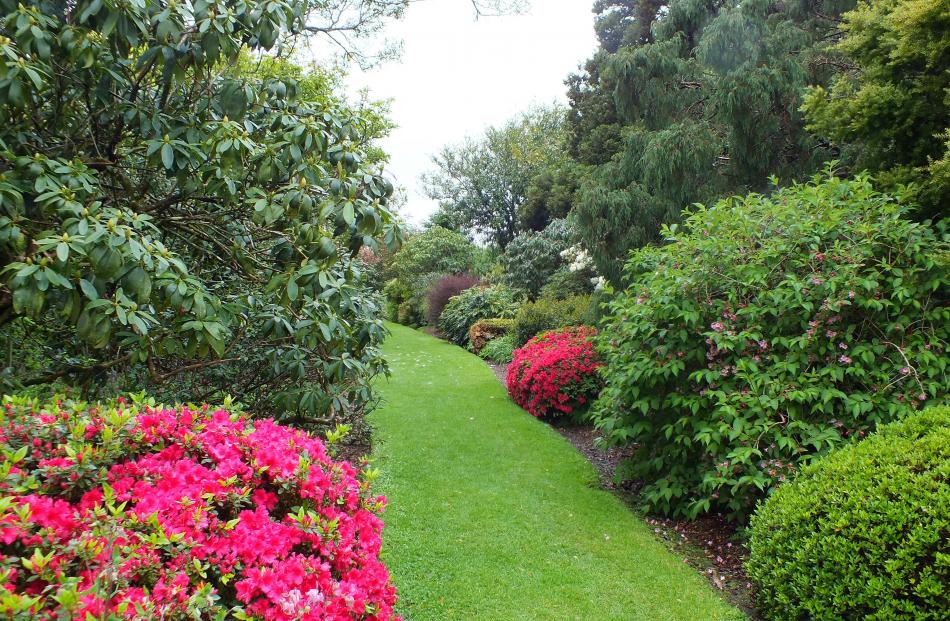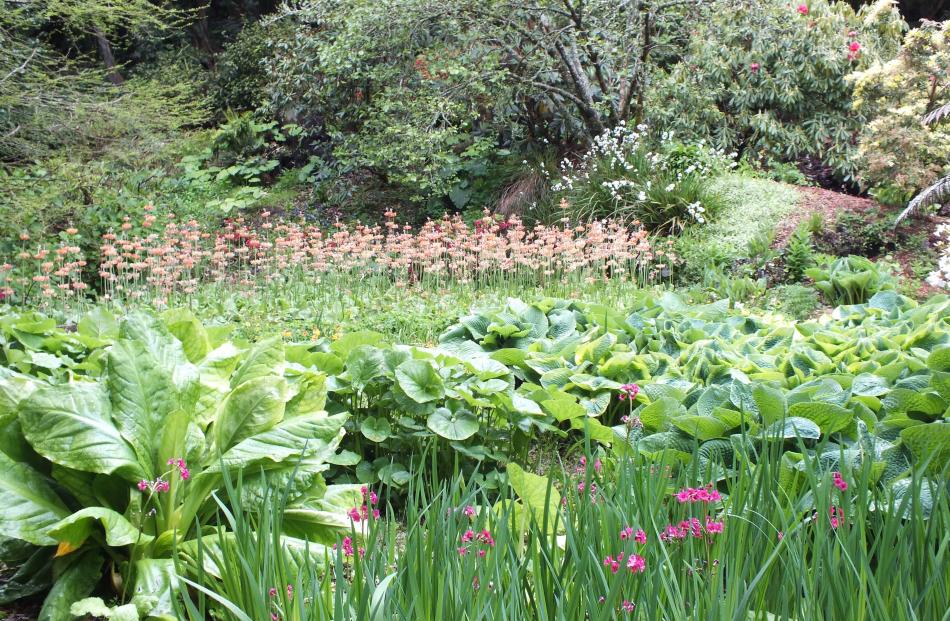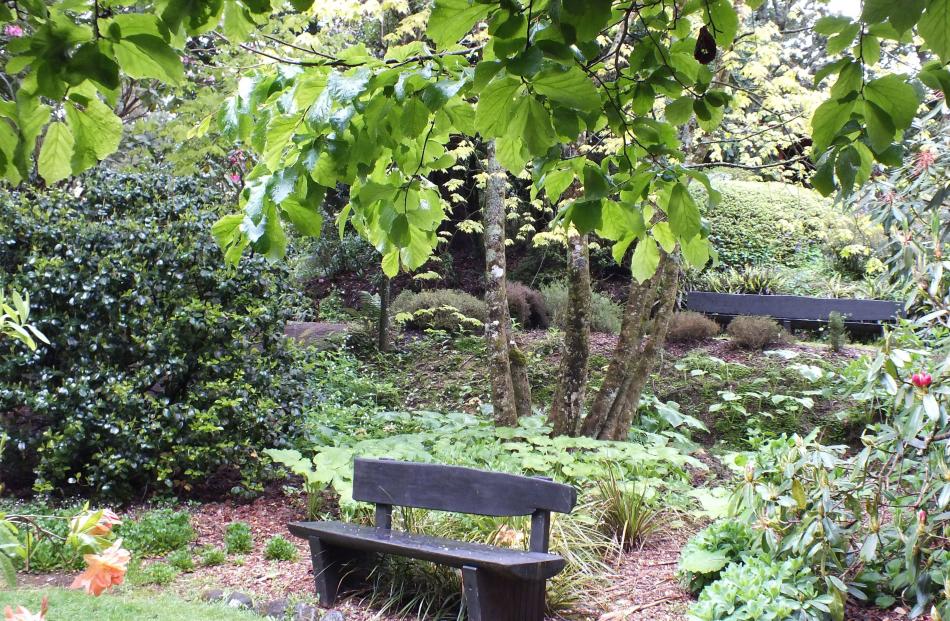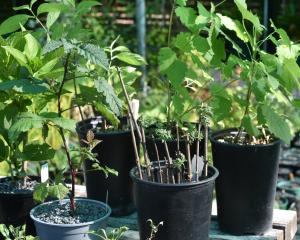Farm gardens usually expand because a woman wants a bigger plot, but at Hollard Gardens in Taranaki, it was a bloke’s initiative. Gillian Vine reports.
Bernard Hollard (1903-96) has been described as "a much better gardener than a farmer". I don’t know about his dairying skills but a visit to Hollard Gardens, near Kaponga in Taranaki, makes it clear that he was a top-notch gardener.
When Bernard was 4, his grandmother gave him a yellow abutilon cutting and he was to garden for the rest of his long life. In 1926, his father had bought a 103ha dairy farm, later transferring two-thirds of it to his son, so Bernard ("Bernie" to family and friends) headed for the cow byre.
The first area fenced off from the farm in the 1950s is what is now known as the Bush Walk. As well as some of the original rhododendrons and azaleas, there is a huge native passionflower (Passiflora tetrandra) or kohia, believed to be several hundred years old. Nearby are two tall manna gums (Eucalyptus viminalis), planted in 1940. The fast-growing trees were popular in Taranaki for fenceposts and firewood, as they were not useful as timber.
Bernard married when he was 39 and his bride, Rose McElroy, shared his love of plants. He was passionate about rhododendrons and Milton Hollard was named after one of the couple’s two sons. This plant was not bred by Bernard but was one of 18 seedlings given him by his friend Les Jury. The North Garden has more rhododendrons and numerous azaleas, many of them imported during the 1940s and 1950s, when bringing plants into New Zealand was not as complex and expensive as it now is. Gifts from gardening friends, including Felix Jury and Ron Duncan, added to the mix.
Numerous other shrubs and trees attest to Bernard’s wide-ranging interest, from natives to Persian witch hazel (Parrotia persica), Chilean Myrtus luma, notable for its cinnamon-coloured bark and white flowers in late summer, while its pink spring foliage draws the eye to Alchornea trewioides in one of the beds edging the large lawn.
Trees and shrubs are underplanted with hostas, white dicentra, variegated white-flowered honesty, pink lily of the valley and forget-me-nots. My favourite was a plant I hadn’t seen before, false lily of the valley (Maianthemum bifolium), which looks like a small hosta. It’s supposed to be very hardy, so may be one for southern gardeners to check. Slugs and snails appear not to be a problem, as apparently a native brown beetle keeps them controlled, explaining why the hostas have no holes.
A piece of wet ground became the Bog Garden in 1947, when Bernard and Rose spent the summer excavating the area to get the perfect environment for hostas, primulas and irises. No mechanical digger was used, just shovels and wheelbarrows. These days, patches of primulas are in single colours, achieved by dead-heading as soon as flowering is over to prevent cross-pollination.
Bernard filled notebooks about his garden: where plants were sourced, what he paid and how they performed, as well as his ongoing war against pests, especially rabbits. Bernard also wrote gardening articles and these, with his notes, add up to an invaluable garden portrait.
From the early 1970s, the Hollards opened their garden at Labour Weekend as a fundraising project for the Kaponga Lions Club. As Bernard was then in his 70s, club members helped with some of the heavy work, while Rose provided afternoon teas.
In 1982, he gifted his garden to the QE II Trust, which transferred it to the Taranaki Regional Council in 2002.
Changes since then include replacing the Hollards’ modest home with a new visitor centre, which has photographs and newspaper clippings featuring the couple. Annoyingly, these are undated. A nice touch here is an honesty system for coffee, tea and muffins, which would surely have met with Rose’s approval.
For gardeners visiting Taranaki, Hollard Gardens is a ‘‘must see’’, even if it means skipping the much-promoted Pukeiti.
See it
Hollard Gardens are at 1686 Upper Manaia Rd, Kaponga, Taranaki, about a 50-minute drive from New Plymouth. The 4.5ha gardens are open from 9am to 8pm daily (5pm in winter) and entry is free.

